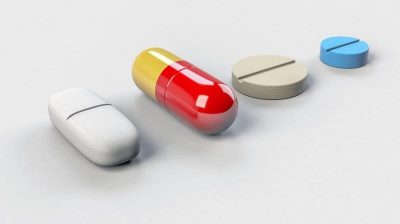- Home
- Editorial
- News
- Practice Guidelines
- Anesthesiology Guidelines
- Cancer Guidelines
- Cardiac Sciences Guidelines
- Critical Care Guidelines
- Dentistry Guidelines
- Dermatology Guidelines
- Diabetes and Endo Guidelines
- Diagnostics Guidelines
- ENT Guidelines
- Featured Practice Guidelines
- Gastroenterology Guidelines
- Geriatrics Guidelines
- Medicine Guidelines
- Nephrology Guidelines
- Neurosciences Guidelines
- Obs and Gynae Guidelines
- Ophthalmology Guidelines
- Orthopaedics Guidelines
- Paediatrics Guidelines
- Psychiatry Guidelines
- Pulmonology Guidelines
- Radiology Guidelines
- Surgery Guidelines
- Urology Guidelines
Scientists closer to making exercise in a pill

An exercise pill - which can induce the health benefits of physical activity - may be closer to reality, as scientists have identified the mechanism that switches on the exercise response in the body.
Researchers from University of Leeds in the UK found that a protein called Piezo1 in the lining of blood vessels is able to detect a change in blood flow during exercise.
During physical activity - as the heart pumps more blood around the body - the Piezo1 protein in the endothelium or lining of the arteries taking blood from the heart to the stomach and intestines senses the increased pressure on the wall of the blood vessels.
In a clever act of plumbing, that narrowing of the blood vessels reduces blood flow to the stomach and intestines, allowing more blood to reach the brain and muscles actively engaged in exercise.
"If we can understand how these systems work, then we may be able to develop techniques that can help tackle some of the biggest diseases afflicting modern societies," said David Beech, professor at University of Leeds.
"We know that exercise can protect against heart disease, stroke and many other conditions. This study has identified a physiological system that senses when the mammalian body is exercising," Beech added.
Researchers also investigated the effect of an experimental compound called Yoda1 - named after the character from Star Wars - on the action of the Piezo1 protein.
They found that it mimicked the action of increasing blood flow on the walls of the endothelium which is experienced during physical activity, raising the possibility that a drug could be developed which enhances the health benefits of exercise.
"One of our ideas is that Piezo1 has a special role in controlling blood flow to the intestines. This is really an important part of the body when we think about the metabolic syndrome which is associated with cardiovascular disease and type 2 diabetes," Beech said.
By modifying this protein in the intestines, some of the problems of diabetes may be tackled.
Perhaps the Yoda1 compound could target the Piezo1 in the intestinal area to have a functional effect, researchers said.
"It may be that by understanding the working of the Yoda1 experimental molecule on the Piezo1 protein, we can move a step closer to having a drug that can help control some major chronic conditions," they said.
The study was published in the journal Nature Communications.

Disclaimer: This site is primarily intended for healthcare professionals. Any content/information on this website does not replace the advice of medical and/or health professionals and should not be construed as medical/diagnostic advice/endorsement or prescription. Use of this site is subject to our terms of use, privacy policy, advertisement policy. © 2020 Minerva Medical Treatment Pvt Ltd